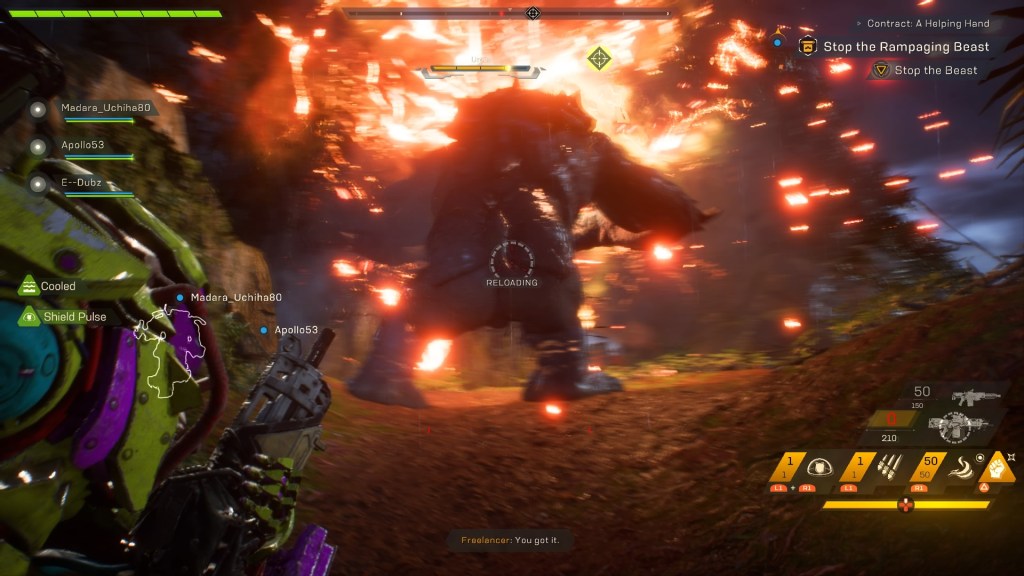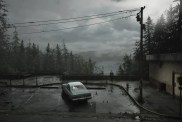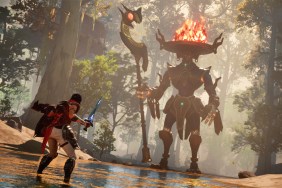If you were to look into the impressive back-library of long-storied developer BioWare, you’d find a legacy of genre-defining experiences that have left an indelible mark on the industry. However, in recent years, this shine has begun to lose its luster a bit. For this reason, it seemed that the studio needed for Anthem to be a gigantic win, and it was pulling out all of the stops in order to bring the sky-high ambitions to fruition. However, when a game designer’s head is always up in the clouds, the team making the game may tend to lose sight of what is happening down on the ground.
Narrative Nuisances
Even though I’ve been a fan of damn near everything that BioWare has created since the Baldur’s Gate era, I’m more than willing to concede that combat has never truly been the studio’s strong suit. This was a team that knew how to tell amazing, immersive stories, allowing players to feel like they had a hand in crafting the universe around them. While the story of Anthem is certainly massive and sprawling, the lack of true agency ultimately makes the player feel like a stationary statue that the narrative essentially revolves around.
While there are dialog choices that seemingly steer conversations, it’s hard to shake the feeling that these decisions are superficial at best. The exposition very much felt like it was going through the same loop you would encounter in a Telltale game. There were slight deviations in the script depending upon the where the player steered the conversation, but it felt like all forks in the road still converged on the same over-arching narrative beats by the time each chat drew to a close.
[imagebrowser id=8613]
Despite the fact that each dialog dump had the same pre-determined end point, at least each scene was very well acted. Every character in the world of Anthem carries a genuine weight to their delivery that shares a communal sense of tense exhaustion. These people have been through some shit, and they carry themselves as such. The nuanced facial animations and subtle body language further help drive home the authenticity of every cast member. This conviction is what helps drive home the narrative and encourages player investment, despite the overall lack of influence.
Throughout the roughly fifteen hours of the core campaign, the world is unfurled in all of its vibrant glory. The storyline itself is fairly well delivered, while still offering plenty world-building opportunities for those willing to dig into the codex and side missions. If you’re looking to simply dive into the action and mainline the campaign, there’s a complete end-to-end experience that delivers the proverbial goods. While there’s some nuance to a vast majority of characters interactions, these are side dishes that will only become more apparently the further off the beaten trail the player is willing to explore.
What ultimately ends up being the main detraction from the storyline itself is the fact that very few decisions made by the person behind the sticks seem to bear any substantial weight. They may steer a couple of sentences in the scope of the overall story, but this is one of the first times where a BioWare game didn’t feel like it was my story.
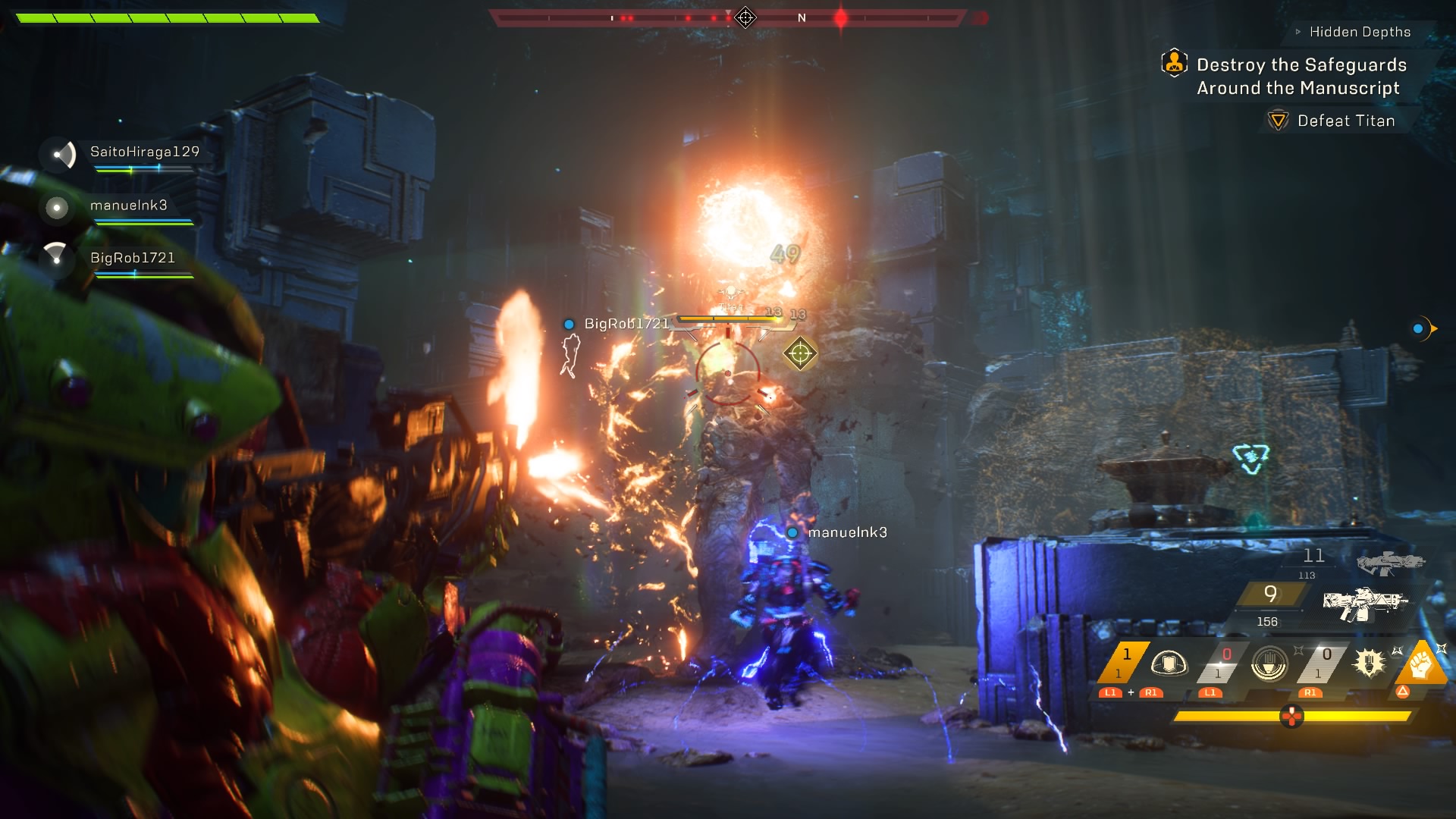
Fire the Missiles!
It’s hard to shake the impression that Anthem is a tale of two different games, forced to be a part of the same product. For all of the issues I had with the storytelling and overall narrative delivery, I still found the combat mechanics to be outstanding. Navigating around the world in your javelin feels effortless, and the addition of flight mechanics makes the moment-to-moment action feel like nothing I’ve ever played before. The gunplay, which is unquestionably snappier and more responsive than anything BioWare has produced prior, could stand on its own against most action-dedicated games on the market.
When in combat, there are numerous subtle quality of life enhancements that I didn’t even know I wanted until I experienced them for first time. A perfect example of this is the game’s interactive reticle. When aiming down the iron sights, the HUD display is essentially business as usual. However, once you actually dispatch an enemy, there is a satisfying pop of DualShock vibration, as well as a red “X” that quickly flickers over the now-deceased enemy. Finally, I won’t be wasting ammo trying to double-tap a critter that has already bitten the proverbial dust. Admittedly, this is nothing groundbreaking, but it’s a feature that I hope every shooter steals immediately.
As well as Anthem performs as a shooter, it’s easy to lose track of the fact that it also has plenty of RPG-driven, looter-shooter mechanics to lean on. Part of the reason that it’s so easy for the loot aspects of the game to fade off into the background is because it’s such an arduous process to change your javelin’s loadout. Where it’s peers in the open-world action game space allow for weapons and loadouts to be painlessly swapped out on the fly, this is apparently a foreign concept to BioWare.
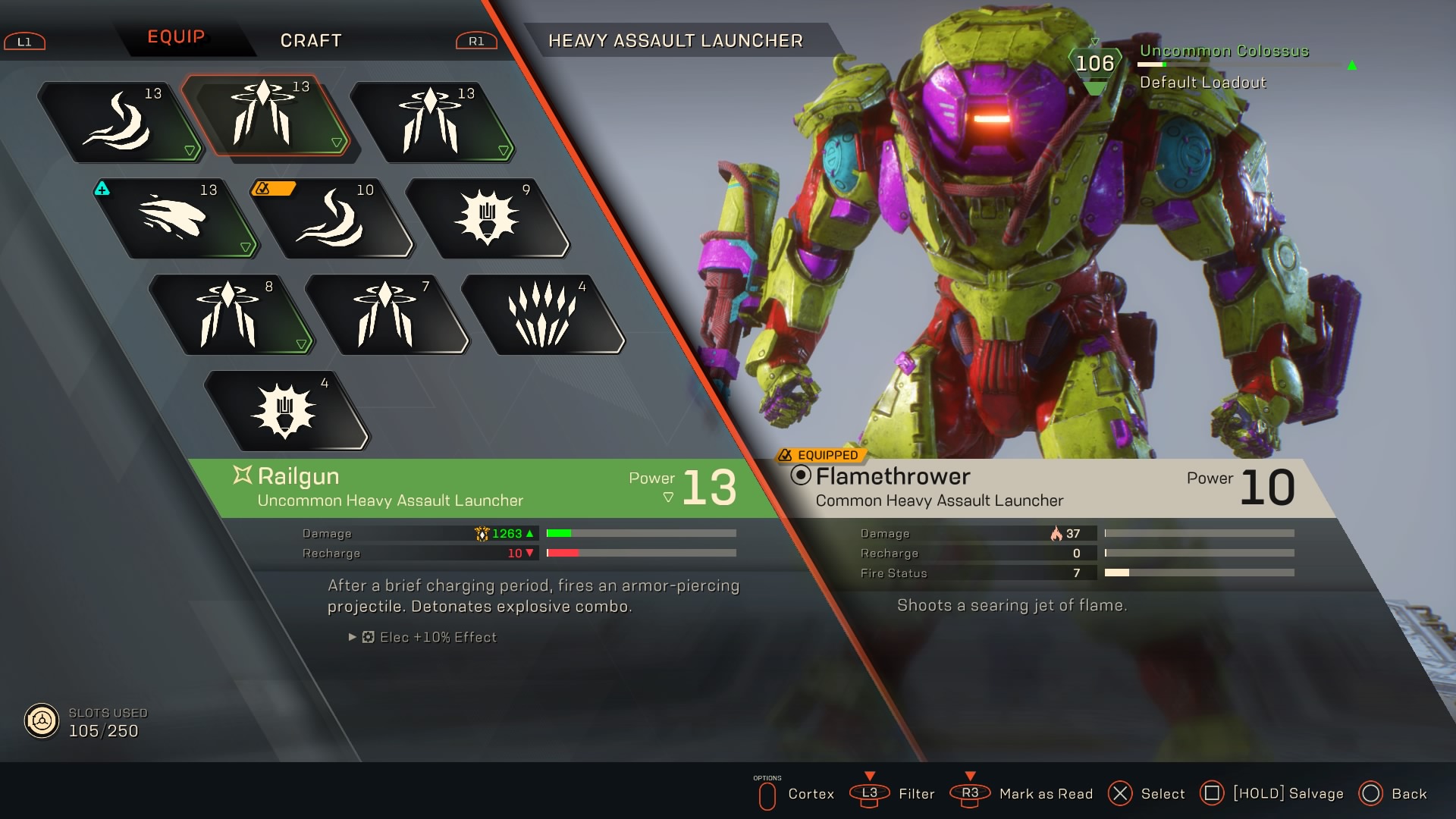
In order to make any modifications to your unit, players are forced to disconnect from their current game session, sit through a lengthy loading screen, load up their javelin, make the changes, then sit through another loading screen while you launch back into the world. Players will likely spawn at the start of the mission they had previously exited or be transported back to Fort Tarsis. If you had anything that was in progress prior to exiting for javelin customization, consider that lost to the sands of time.
This is a huge inconvenience and one of the biggest hindrances to any sort of weapon experimentation. If I’m forced to sit through five minutes of cumulative loading time in order to make a slight tweak to my unit’s configuration, you can bet that I will think twice about it. There’s no way that I’m going to use any weapon/ability combos outside of what I know will work every time. This is the sort of design choice that seems antithetical to the style of game BioWare produced. How this even got past the whiteboarding stage is beyond me.
Misdirected Mapping
Other baffling design choices were the overall UI and mission selection designs. While they are far less egregious than the previously mentioned offenses, the entire flow of the UI doesn’t make much sense. Picking your desired mission was already clunky enough in the PC build, but BioWare actually piled another layer of menus on top of that for the console version!
Though attempting to make navigation easier, the developer may have inadvertently muddied the waters even further. There were already plenty of games that did this well, so I see no reason why BioWare felt the need to reinvent the wheel. In a game that featured a variety of hits and misses, this was a swing and miss that you could’ve seen from orbit. Or at least, you could’ve seen it if you had the proper mission type selected before trying to view the map.
To get things back on a positive note, lets discuss the javelins for a bit. Unlike a game like Destiny, every class in Anthem feels definitively different from the other options. There are genuine strengths and weaknesses to each possible selection, in a way that this style of game has been historically lacking. Additionally, the level progression provides a tangible benefit for each unit at every level. Yes, there is still plenty of grinding, but you know exactly what you are moving towards, thanks to the unit customization UI. There are no secrets awaiting behind each level up, which will ultimately help take some of the sting out of the painfully repetitive mission structure.
After playing the game for roughly about three hours, you’ve most likely encountered a vast majority of the mission types that will be available throughout the entire campaign. Additionally, in other open-world titles, there are frequently ad-hoc missions that will crop up organically during gameplay. These primarily exist to pull a squad away from the core mission that is being conducted. Many times, these deviations would take the form of public events. Ironically, these unscripted encounters actually form some of my favorite co-op moments in all of gaming. Something about the unpredictable nature of the action lent itself well to the chaos of battle.
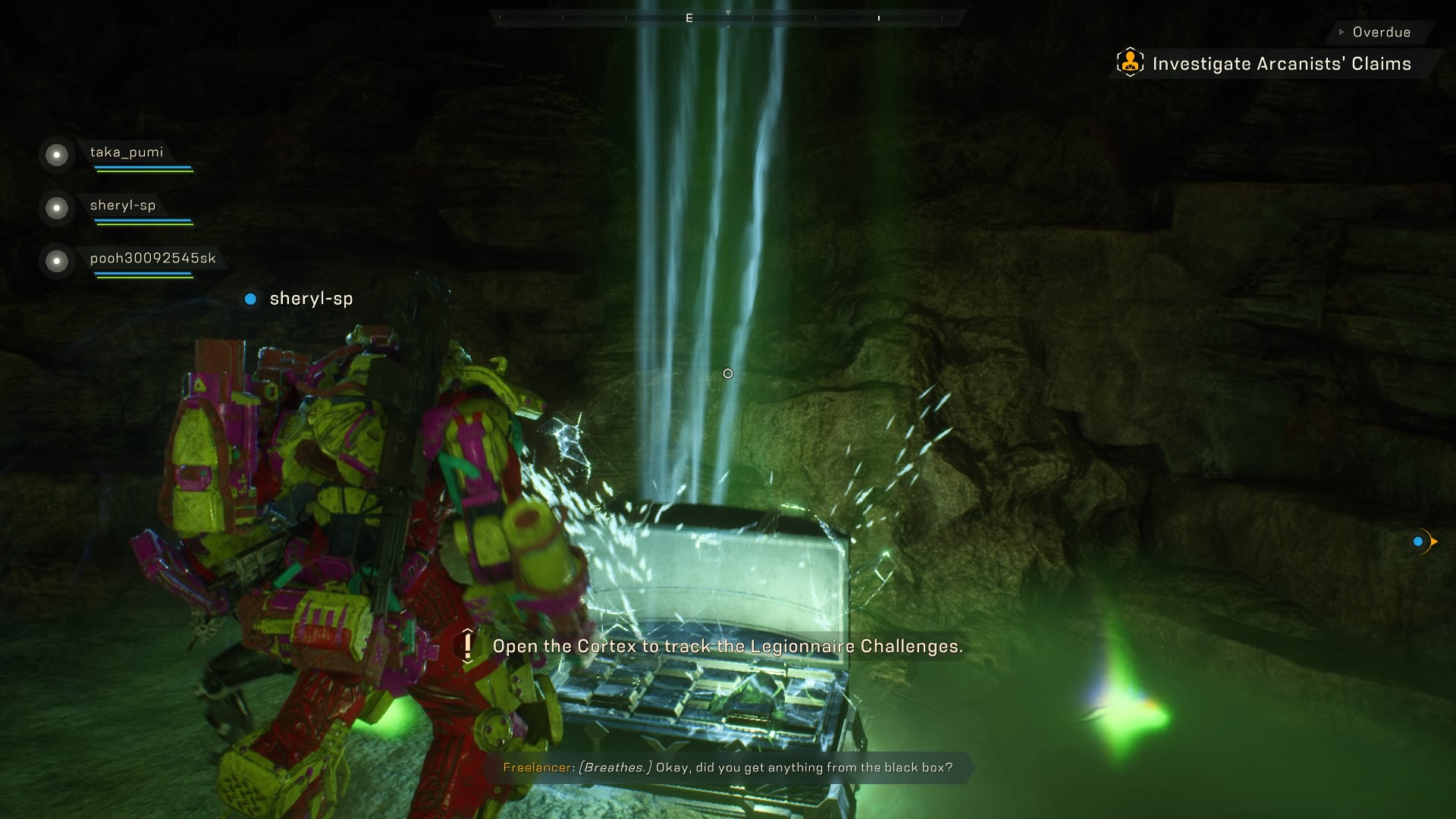
The main issue is that a vast majority of the units in Anthem are firmly planted on the ground. Pretty much from the moment that the game starts, players are encouraged to perform a vast amount of their traversal from the air. So how are these randomly generated ground units ever supposed to pull players off of the beaten path? Most times, players will just fly overhead and never see what is going on in the vegetation below. It feels like this is a missed opportunity that could be addressed through introducing more airborne units, that would ultimately force combatants to land and cool off their engines. Otherwise, this content will only ever get touched is by those making a conscious effort to explore every corner of the map.
If you can actually take a second and come down out of the stratosphere, you’d find an ecosystem that’s teaming with life, just waiting to be discovered. It genuinely feels like a location where damn near anything could happen at any given moment. This variety helps feed the desire to chart out every centimeter of the world. At the end of the day, this is what kept me coming back to the game, long after I had bored of the core campaign.
As much as I personally wanted Anthem to be a runaway success, it ends up delivering an inconsistent experience that constantly waivers between mediocre and excellent. Unfortunately, regardless of where the quality falls on that spectrum, the biggest takeaway is that it feels decidedly un-Bioware. Characters deliver narrative in a compelling way, but the overall storyline lacks the player ownership found in their previous releases. And while it possesses the building blocks necessary to deliver a standout title, at launch, this has yet to coalesce. I have no doubt that Anthem will dramatically improve over time, but right now, this flight should remain grounded.
Anthem review code provided by publisher. Version 1.0.2.01 reviewed on a standard PlayStation 4. For more information on scoring please see our Review Policy here.
-
Outstanding voice acting and motion capture
-
Huge, densely populated world
-
Plenty of optional content to explore
-
Dialog options seemed to have no bearing on narrative
-
No way to change javelin loadouts on the fly
-
Not enough mission objective variety
-
More airborne units, please!
